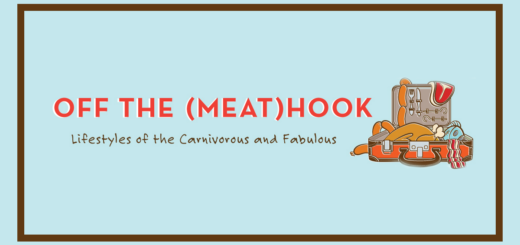{travelogue} Soaking up Shanghai
Shanghai might just be my all-time favorite Chinese city. This history-rich melting pot offers a little bit of everything you want—which shouldn’t be too surprising, considering its position as one of the world’s major global ports and the financial center of Asia, boasting a young, open-minded, and fast-growing population that currently tops off at close to 30 million. If you’re dreaming of visiting, here is a look at some of my favorite things. First, what to do, then, what to eat, and finally, where to sleep.

A tip for finding things: when possible, you should look up where you’re going on the excellent website SmartShanghai.com, which gives you a map to help you find the location, the nearest metro station, and the option of a taxi printout in Chinese that you can give to a cab driver.
The doing
It’s important to remember that there have been Europeans in Shanghai since around the mid 19th century, which means it’s not like most other Chinese metropolises. The number one thing people tell you to do in Shanghai? “Walk the Bund.” The Bund is a riverside walkway flanked by European-style buildings that host chic hotels, restaurants, clubs, and offices.

The views from the Bund look across to the booming Pudong area and let you see how the city lights up as each building competes to be the brightest and most attention-getting. You can also take a sunset boat cruise along the Huangpu River, to see the bright lights from a different vantage point. Of course, this is Shanghai, so once it gets dark, your boat will light up, too.

Just west of the Bund, the most charming area to spend time in is the French Concession. Tree-lined streets with colonial-era buildings sit alongside neon-lit noodle parlors and super-duper malls. One of the highlights of the French Concession is a foray into the warren of alleys and lanes that make up the Taikang Lu area. It’s pretty hard to describe, but imagine a bunch of small lanes and shops all cobbled together. Part souq, part street, part mall, part art gallery, it’s (probably) not like any other place you’ve ever been to.

Wander the lanes, browsing the shops and artist spaces, where you can find anything from smart silk scarves and high-fashion clothing pieces to cheeky Japanese t-shirts, Communist propaganda memorabilia, and quirky gifts.

For a sanitized, albeit very pleasant version of what the French Concession has to offer, hit up Xintiandi – a painstakingly restored area of shops and restaurants that comes alive at night with patrons spilling out on patios, cocktails in tow. Xintiandi could be renamed Expat Central, but for the incongruous historical site within its confines: the building that signifies the birthplace of the Communist Party. I had a nice time drinking beer in the warm night air there, but for the most part I found myself more interested in things like the massive beverage towers being hauled by the bicycle delivery guys just outside the area.

On the weekends, in People’s Park, you will find something strictly Chinese: the Marriage Market. Hundreds of potential suitors list their height, weight, and other interesting stats about themselves, in hopes of securing a partner. Of course, the majority of people looking at listings are the mothers and grandmothers, jotting down phone numbers to bring home to their recalcitrant daughters. The young women in the park that we chatted with find the whole system dreadfully old-fashioned and completely embarrassing.

A little more pricey than roaming the streets on your own, but 100% worth it, is to schedule a tour with Shanghai Pathways. The native Shanghainese guides will show you parts of the city that you could not easily access on your own, and it’s a truly special experience. You can see the breadth of options on their website. We took a trip to the huge, bustling, 24/7 Shanghai Wet Market, which was a fabulous way to spend a morning. Lots of meat hooks! (To see a super in-depth look at our Shanghai Pathways tour to the Wet Market, you can check out the full pictorial run-down I wrote for Summer Tomato.)

We also convinced our guide to take us to the only place in China that still produces soy sauce the old-fashioned way, which takes 2 years (!) to ferment in clay pots with woven lids. It’s not an official tour, but we jumped at the chance to be the guinea pigs for this potential future tour, and the opportunity to experience a very special kind of barrel tasting. The verdict: delicious.

Across the Huangpu River, you leave Puxi (“west of the river”) for the modern marvels of the Pudong (“east of the river”). Head to the World Financial Center, the 2nd tallest building in the world and the home of one of the most spectacular observation decks in existence. Pay the full price and you can zoom all the way to the top of the opening, which has a glass floor that makes most people (even those of us with strong constitutions and no declared fear of heights) waver a bit. Of course, for roughly the same price as entry to the observation deck, you can just hit the 93rd floor lounge of the Park Hyatt in the same building, and buy yourself a couple of drinks, free view included. Of course, this is Shanghai, so it’s not surprising to hear that they’re currently constructing an even taller building next door.

Perhaps you’d like to get as far off the touristy track as possible. I have just the thing for you—Qibao Old Street. This water town lies within the confines of the Shanghai metro system, so it’s available to you if you’re willing to sit on a subway train for 30 minutes or so. Qibao is a little hard to explain, but I interpret it as having a Jersey Shore/Coney Island kind of vibe. The only difference is that instead of carnival games, they have cricket fighting (the bugs, not the bats) and instead of kettle corn, you can buy miscellaneous animal parts on sticks to snack on. Imagine teenage paramours trying to be cool with a backdrop of red-lit shops and stalls with whole barbecued frogs and pig feet on sticks, all underlined by some vaguely dirty (albeit grudgingly picturesque) canals. Still, the effect is charming, and for once, you’ll be the only laowei (foreigner) around–it’s not just tourist-free, but even expat-free.

Another slightly off-track destination is the new Shanghai Museum of Glass, a small and very specific museum (my favorite kind!) in a gorgeous industrial glass building. SHMOG, as its known, is a bit of a trek (don’t even try to metro and bus there; just go for the taxi) but the building is striking and it’s pretty enjoyable if you like glass. It starts out pretty slowly and predictably, but the second half of the exhibition is informative and aesthetically interesting.

If you’re into the gallery scene, don’t miss a few hours at M50, on Moganshan Road. You’ll find a haphazard grouping of old buildings that used to be part of a textile mill, which are currently colonized by up-and-coming artists. Wander among the pedestrian alleys–with galleries on every floor, you’re sure to find something that catches your eye. And do take the effort to hike up the stairs, because some of the best galleries are on the upper floors.

The eating and drinking
First things first: a stop at Yang’s Fry Dumplings. You want to do this very early on, because you’ll probably want to go back again and again. With over a dozen branches throughout the city, you should be within easy distance to Yang’s at all times. Pay for your dumplings at the cashier (at press time, under US $1 for 4 dumplings—you order them in multiples of 4) and join the back of the queue. Grab a sauce bowl and a soup spoon and jockey for a seat (sharing a table is the norm.) After mixing up the right proportion of vinegar and fried chili flakes in your sauce bowl, move one of the dumplings into the soup spoon; your best bet is to use the spoon and the chopsticks as a team to tackle the juicy exploding dumpling.

The dumplings, which are fried on the bottom and steamed on the top, are full of hot broth, so take a small bite and slurp out the juice before proceeding. Pile on the vinegar and chili flakes and prepare to D.I.E. of happiness. After the third dumpling, I predict you’ll be a) deciding how many more to order and b) trying to figure out when you’re going to make it to Yang’s next.
On the opposite end of the spectrum in terms of price, atmosphere, and clientele, nearly everyone we talked to recommended recommended dinner at M on the Bund, on the 7th floor of 5 Bund, and while it was a gorgeous space and a view that couldn’t quit, the food was only so-so, especially considering the exorbitant prices.

Instead, I recommend you skip M and just go one floor down to Glamour Bar for well-crafted and interesting cocktails. Get there early enough (before 9, maybe) and you can snag a table with a great view of the sky-high skyline across the river in Pudong, plus a front-row seat for people-watching as the place starts to fill up.
If you’re in the Taikang Lu area and want to grab a snack or a drink while you’re there, I recommend Kommune, which offers a laid-back courtyard setting and a surprisingly delicious albeit eclectic menu. If you’ve ever dreamed of eating good hummus or lasagna in China among artsy intellectual types while listening to achingly hip music, this is your big chance.

But you are in China, after all, so you might be on the hunt for regional Chinese food, and migration patterns are definitely in your favor in Shanghai, as you’ve got people from every region of China showing off their culinary stylings. If you want more dumplings options than the one-size-fits-all Yang’s experience (say, if you don’t eat pork) then there is always a branch of the upscale Taiwanese chain Din Tai Fung nearby; you can get them filled, fried, steamed, or souped in a dazzling array of combinations.

Overall, I personally find the bulk of the Shanghainese cuisine a little bland for my taste, but the Grandma’s Meat Pot at Shanghai Min—a clay pot overflowing with slow-braised pork belly and knotted tofu skin—is one of the best things I’ve eaten in a long while and worth the trip. I wouldn’t turn down their fried meat dumplings, either, and the Bund views from their perch at the tippy top of Super Brand Mall aren’t too shabby.
For excellent and accessible Yunnan food, Lost Heaven is a great bet, but if it’s not too inconvenient, trek out to the location at Gaoyou Lu and Fuxing Xi Lu; it’s more intimate and homey than the glitzier version on the Bund. But truly, my heart belongs to the numbing chili fires of Sichuan cooking. Thankfully, a couple of Shanghai natives shared their favorite Sichuan restaurant with us, and it was spectacular. Middle-class Chinese families fill this affordable, large, tasteful restaurant (which is somewhat unfortunately named Chopsticks) in the Shanghai Pearl Hotel. Standouts included fish-flavored shredded pork (which we confirmed had no fish in it and tasted nothing like fish) tree mushrooms in a hot pot, and poached sliced beef in hot chili oil, with thick, glassy rice noodles slicked with chili oil. There was also a dish that consisted of chiles with tiny pieces of chicken hidden throughout. The chiles outnumbered the chicken by about 20 to 1.

Of course, if you want braised bullfrog or duck blood, be my guest (and let me know how they tasted, because I didn’t try them.)
The Cool Docks is also a pretty cool place, despite the dorky name (maybe it sounds better in Chinese?) with a slower, more relaxed feeling than Xintiandi, featuring small restaurants around a courtyard fountain, and another opportunity for people-watching.

The Indian restaurant at the Cool Docks, Kebabs on the Grille, is so good we went back twice for curries and lamb kebabs with cooling raita and charred naan.
With the strong expat legacy, there are other non-Chinese restaurants that deliver as well. For cracker-thin pizzas and Italian specialties in a breezy covered side patio, try Bella Mia, a standout and a welcoming place when you just can’t eat another dumpling. The friendly, hands-on owner claims both Northern and Southern Italian heritage, so he deftly covers a spectrum of dishes.
For drinks, the outside rooftop patio at Kathleen’s 5 in People’s Park is a classic– and they have a reasonably priced, thoughtful wine list to go with the views. Across the street from the Cool Docks at Waterhouse on South Bund, both the rooftop bar and the first floor lounge are intimate, fun places for a drink (make your choice depending on weather and how badly you want a view.)

For strictly drinks, The Bund and Xintiandi (both described above) are crawling with bars and clubs – pick up a copy of Time Out Shanghai or That’s Shanghai, or check SmartShanghai.com to see which is the flavor of the week.
Now go back to Yang’s one more time.
The sleeping
There are a wealth of great hotel options in Shanghai, and as usual, I picked from the Tablet Hotel offerings. We stayed at two different places in Shanghai, and we liked them both for different reasons. JIA Hotel Shanghai is in an old, 7-story French Concession building that’s been retrofitted with modern, comfortable, thoughtful furnishings. Just off Nanjing Road, right at the metro station, it’s at the epicenter of commerce and crowds, in a good way. If you can afford the splurge, opt for one of the reasonably priced suites – you’ll feel like you’re playing house in your very own Shanghai sublet.

If you want to be out of the unceasing action of Nanjing Road, Waterhouse on South Bund, also a modern hotel, might be a good choice. Its aesthetic is a little grittier than JIA—think concrete and iron—but not at the expense of comfort or service. It’s next to the Cool Docks, which makes it easy to grab a bite to eat or a drink, plus it’s on the southern end of the Bund, so you can walk the mile or so down for dinner and Bund views at your pleasure.

An added bonus is that the walk to the closest Metro stop (Xiaonanmen) leads you through the old silk market, which is an area where people still live in an old-fashioned way that hasn’t yet fallen prey to the cranes and construction.

But fall it will, because Shanghai never stops moving forward, forward, inexorably forward.





I’ve been to Hong Kong and Beijing (albeit a long time ago) and wasn’t sure if I wanted to go back to China any time soon. You have officially changed my mind. Now I would LOVE to go to Shanghai someday.
Kristina – you should go! I liked it better than Hong Kong or Beijing…